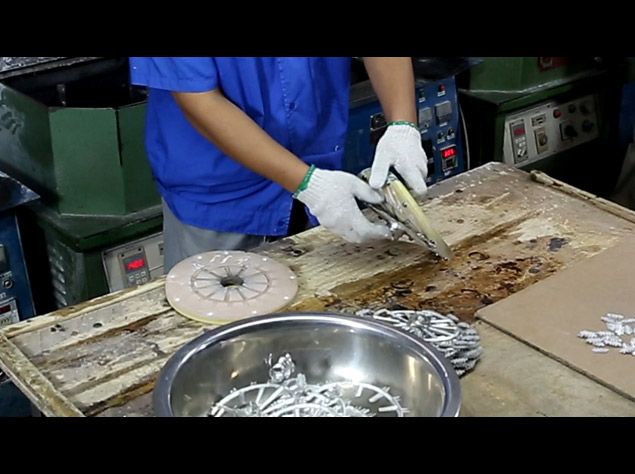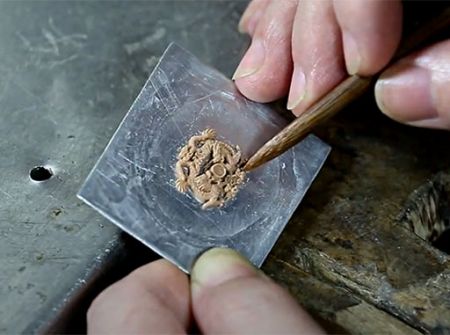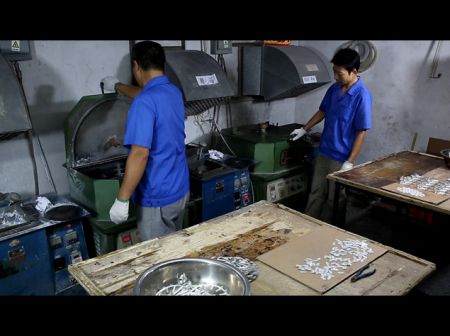
Pewter Pins and Badges
Pewter is an excellent material for 3D cubic or miniature-sized lapel pins, key chains, jewelry brooches, charms or paper weight… etc., especially for small quantity 3D cubic designs, pewter is more flexible than zinc alloy because rubber molds can be completed easier than steel molds and spin casting is faster than die casting. The shapes are formed by spin casting, almost any shapes or reliefs are achievable, inner cutout or empty spaces are easily formed without any cost increased.
Hand Made 3D Prototype Clay Mold
Pewter is an excellent material for designing 3D or miniature-sized items or items with empty spaces in the centers. Molds for manufacturing pewters are rubber made, easy to be prepared, however rubber molds deform easily after years’ storage because of climate changes. Usually before we duplicate the shapes in rubber molds, we always have a clay mold ready to check the dimensions, thickness and shapes.
Spin Casting Procedures
If the souvenir emblems made of pewter (tin and lead alloy), all the shapes are formed by spin casting from liquefied pewter and then cool down to solid emblem, finishing and color filling are next procedures after shapes formed. Depends on the percentage of tin and lead, the kinds of pewter are categorized to 6 different grades. Pure tin (#0 type) is the most valued material with softness and #6 (with more lead contents) is the least costly but friable.
This is the procedure for spin casting. It is hard to see how the items formed because the operation is done inside machine. Pewter is tin and lead alloy in liquid stage. Since the item is cast, it can be flat in 2D / cubic in 3D or even be made as a miniature (360 degree cubic)
- VideoGallery


